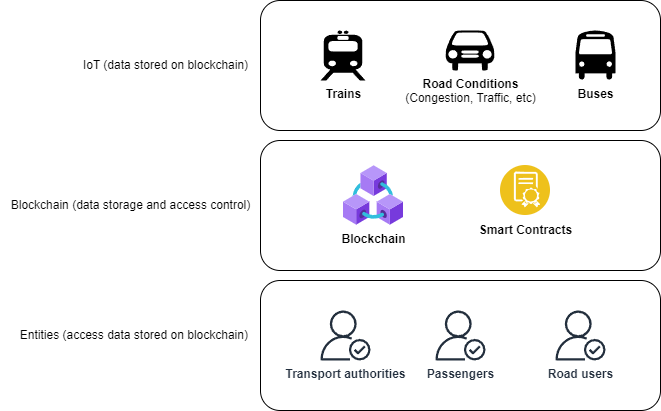By: Soo Nee Kee1,2
1Universiti Malaya, Kuala Lumpur, Malaysia.
2International Center for AI and Cyber Security Research and Innovations, Asia University, Taiwan, Email: nee.kee2001.nks@gmail.com
Abstract
Internet of Things (IoT) has rapidly growth and been is used in various industries, from smart homes to smart cities, and from public sectors to private enterprises. It brings a lot of benefits to us and makes our life more convenient, including providing real-time monitoring, automating operational processes and predictive maintenance, and improving resource management. IoT also plays important role in transportation industry to improve passengers’ safety and user experience. Through IoT-enabled devices, transportation systems can monitor traffic and optimise public transport schedules by providing public transportation arrival time in real-time. It helps in preventing congestion based on current road conditions. Nevertheless, IoT-enabled devices used in transportation systems bring security concerns such as data privacy risks, vulnerability to cyberattacks, and potential operational disruptions. Therefore, a blockchain-based distributed ledger system is proposed to address security vulnerabilities in IoT-based transportation system.
Keywords: Internet of Things, IoT, Transportation System, Intelligent Transport System, ITS, Blockchain, Access Control
Introduction
Intelligent Transport System (ITS) is a smart transport system used in smart cities, integrating communication technologies such as vehicle-to-vehicle and vehicle-to-infrastructure communications to allow users to interact with other vehicles or infrastructures. These communications provide smart ticketing solutions, real-time road conditions and public transport services. [1] Likes other interconnected systems, ITS is exposed to cybersecurity threats as it connects and communicates with other services and systems, allowing access to various networks like internet. Therefore, blockchain is integrated into ITS to provide decentralized and tamper-proof ledger for data management.
Blockchain is a decentralized storage that stores data in a distributed manner, making it nearly impossible to alter or delete stored data. In the blockchain environment, data is stored in block and each block connects with previous blocks via cryptographic chain. Any malicious changes will be tracked and recorded on blockchain. The tamper-proof of nature ensures that data shared across vehicle-to-vehicle or vehicle-to-infrastructure is protected from unauthorized access and modification. This can improve the accountability and reliability of information, such as real-time traffic conditions and public transport services.
Techniques
Blockchain acts as a storage solution in ITS to store all data related to transportation, such as road conditions, bus or train arrival times, road accidents and vehicle telemetry. Its decentralized approach ensures that data is stored distributary across multiple nodes, making it tamper-resistant and enhancing the security of transportation ecosystem. Smart contracts provide automation in data storing and access control permissions based on predefined consensus. [2] It only allows authorized access to certain data, ensuring transparency and security of the overall system. For example, smart contracts are programmed to update arrival times based on GPS data collected from buses or trains in real-time automatically. Besides, users can access data from the blockchain-based on access permissions programmed in smart contracts. Transport authorities have the ability to modify important settings or access private data about operational metrics while passengers or road users can access real-time public transport schedules or road conditions.

Conclusion
In conclusion, the use of blockchain technology and smart contracts helps to manage access permissions on ITS data, enabling secure and efficient data sharing among various stakeholders. This integration not only enhances security of IoT-enabled transportation systems but also improves user experience by providing accurate and timely information. The tamper-proof blockchain reduces the risk of data breaches and unauthorized access. The automation process provided by smart contracts streamlines operations, reduces administrative burdens and enhances service responsiveness. Overall, blockchain can effectively improve security of transportation systems, ensuring efficiency, accountability and sustainability of ITS.
Reference
- B. Zeddini, M. Maachaoui, and Y. Inedjaren, “Security Threats in Intelligent Transportation Systems and Their Risk Levels,” Risks, vol. 10, no. 5, Art. no. 5, Apr. 2022, doi: 10.3390/risks10050091.
- “Exploring the integration of edge computing and blockchain IoT: Principles, architectures, security, and applications – ScienceDirect.” Accessed: Oct. 04, 2024. [Online]. Available: https://www.sciencedirect.com/science/article/pii/S1084804524000614
- Raj, B., Gupta, B. B., Yamaguchi, S., & Gill, S. S. (Eds.). (2023). AI for big data-based engineering applications from security perspectives. CRC Press.
- Gupta, B. B., & Gupta, D. (Eds.). (2020). Handbook of Research on Multimedia Cyber Security. IGI Global.
- Gupta, B. B., & Nedjah, N. (Eds.). (2020). Safety, Security, and Reliability of Robotic Systems: Algorithms, Applications, and Technologies. CRC Press.
- Deborah, L. J., Vijayakumar, P., Gupta, B. B., & Pelusi, D. (Eds.). (2023). Secure Data Management for Online Learning Applications. CRC Press.
Cite As
KEE S.N. (2024) Enhancing IoT Security through Blockchain-Enabled Distributed Ledger Systems in Transportation System, Insights2Techinfo, pp.1